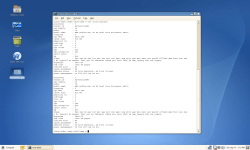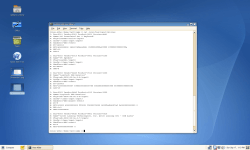- Qualcomm Launches Snapdragon 4 Gen 2 Mobile Platform
- AMD Launches Ryzen PRO 7000 Series Mobile & Desktop Platform
- Intel Launches Sleek Single-Slot Arc Pro A60 Workstation Graphics Card
- NVIDIA Announces Latest Ada Lovelace Additions: GeForce RTX 4060 Ti & RTX 4060
- Maxon Redshift With AMD Radeon GPU Rendering Support Now Available
DFI LanParty UT NF590 SLI-M2R/G

DFIs highly anticipated AM2 enthusiast board is finally here, after months of development. Like previous LanParty boards, this one caters to the overclocker, and simply checking out the BIOS screams that fact. Does it please this enthusiast? Read on…
Page 8 – On-Board Sound, Linux Use
|
|
To give the on-board sound a test, I used my Turtle Beach HPA 5.1 headphones. I do not have a proper 5.1 speaker setup due to lack of room, so these headphones are the next best thing. For subjective listening, I chose to use a few of the samples used in this review. I first took a listen to DJ Tiestos “In Search of Sunrise 5”, which left me impressed. Trance music is a genre that’s somewhat hard to listen to on low-end sound cards, just because there is so much bass which can cause static on some setups. However, it sounded great here. It didn’t seem as clear as the Chaintech AV-710, but it came very close. The Chaintech is one budget card that’s hard to beat, especially for headphones use.
I also gave Half-Life 2 a run with the card and felt the quality to be identical to what I hear from the Chaintech card. The gunfire was crisp and the enemies voices clear. Well, as clear as the Combine can be, really.
Overall, I like the on-board sound. You will not complain about having to use it over a separate sound card. However, I did find the Chaintech AV-710 better overall throughout the different songs I listened to, but no real differences between gaming. Of course, if I had an actual 5.1 speaker setup, my findings would be more accurate. So don’t take these findings too seriously, as headphones are not the best thing to go by.
Since the AM2 launch, Linux has proved a little sticky. Chances are if you are installing off a CD or booting a Live CD that uses a 2.6.17 or earlier kernel, you will need to boot up differently in order to succeed. I have not tested the 2.6.18 kernel, but I’ve been told it fixes some problems… so hopefully some of the more popular Linux distros will make that version a standard to avoid these problems.
If you boot up with a Linux CD, chances are past the boot screen, you will see nothing. I found that sometimes noapic would fix the problem, and if it didn’t then noacpi did. I am unsure what the problem is exactly and why it has to be averted, but I’ve had the same problems across four distros on both motherboards.
At any rate, SLED10 installed no problem with the noapic boot prompt. The network functioned, in addition to the on-board sound. Once the NVIDIA driver was installed, it was a fully functional system with no noticeable bugs at all. So, this board doesn’t seem to have a problem with current Linux versions at all as long as you disable apic or acpi.
In the pictures above, you can see the output of lspci, cat proc, et cetera. Overall, I am quite impressed with the result of Linux on this board… there was nothing tested that would not work. The fact that the audio worked no problem was a nice surprise… as it’s usually sketchy with a brand new board.
Onward to our final thoughts.
|
|
Support our efforts! With ad revenue at an all-time low for written websites, we're relying more than ever on reader support to help us continue putting so much effort into this type of content. You can support us by becoming a Patron, or by using our Amazon shopping affiliate links listed through our articles. Thanks for your support!








